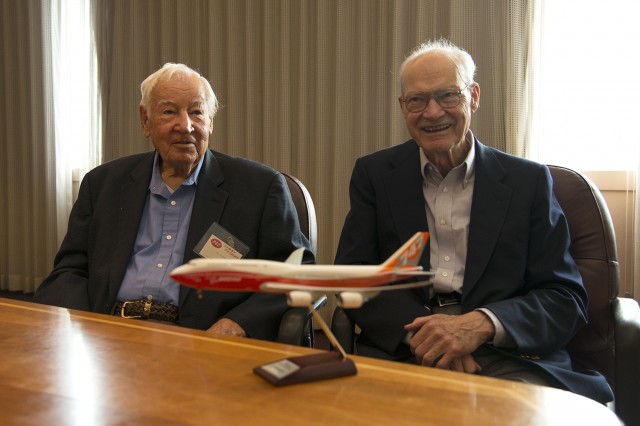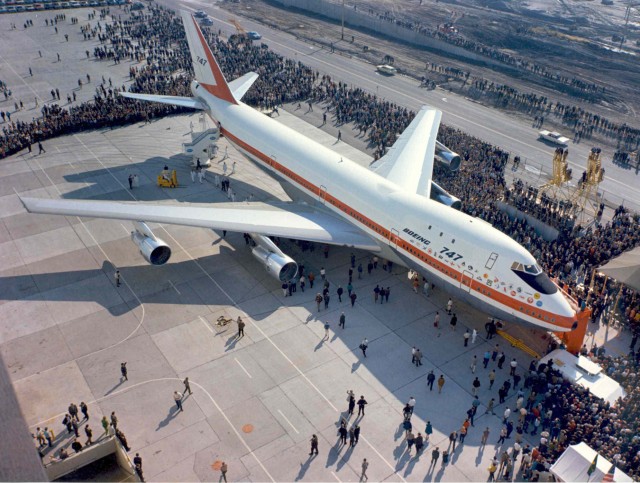
Joe Sutter and Brien Wylge – Photo: Kris Hull
Recently, the Museum of Flight in Seattle finished the first phase of restoring the historic first 747 to its original 1969 appearance. To celebrate this accomplishment, they hosted an afternoon seminar with Joe Sutter, who led the engineering team and is credited as the “Father of the 747”, Brien Wygle, the former Boeing Chief Pilot in 1969 who was in the right seat during the first flight, and noted author Clive Irving, who wrote one of the authoritative books on the 747. Before the main events on October 18th, we had the opportunity to sit down and talk with Sutter, Wygle, and Irving.
The 747 was an aircraft that was developed quickly by today’s standards, according to Sutter. “I was asked to investigate large aircraft designs in April 1965, Pan Am placed its first order in 1966, and we rolled out the first aircraft in 1968, with first flight in 1969, followed by entry into service in early 1970.” For an aircraft the size of the 747, three years from initial concept to rollout of the first model is still today unprecedented.
According to Irving, “It was a large program, and Joe was in the middle of the chain of command, and whenever there was a critical decision to be made, and no one else wanted to make it, Joe made it. He was the one in the end who signed off on everything, and took full responsibility.

Roll out of RA001, the first 747 – Photo: Boeing
You will not find that speed in today’s environment.”It was a massive undertaking, and at one point, we were spending $5 million a day on the project. I was directed to cut 1,000 engineers by leadership, and I polled my crew and asked what they can do without; they said, ‘nothing, we need 800 additional engineers!'” said Sutter. “We were relegated to an old warehouse on the Duwamish River before the Everett factory was built, while the team heading up the government-sponsored SST program were housed in brand-new offices and buildings.”
When asked about how he felt being “relegated to a side project” compared to the high-profile SST program, Sutter replied, “We had a job to do, and we were going to build an airplane that did that job. We were going to get our job done, and we had the attitude that if we did a good job, the plane would have a great future.”